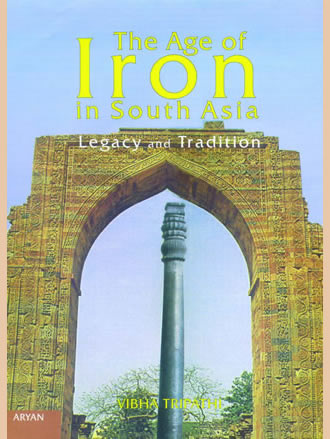THE AGE OF IRON IN SOUTH ASIA : Legacy and Tradition
THE AGE OF IRON IN SOUTH ASIA : Legacy and Tradition is backordered and will ship as soon as it is back in stock.
Couldn't load pickup availability
Genuine Products Guarantee
Genuine Products Guarantee
We guarantee 100% genuine products, and if proven otherwise, we will compensate you with 10 times the product's cost.
Delivery and Shipping
Delivery and Shipping
Products are generally ready for dispatch within 1 day and typically reach you in 3 to 5 days.
- Type: English
- Pages: xvi + 280
- ISBN: 9788173052088
- Edition: 1st
- Publisher: ARYAN BOOKS INTERNATIONAL
- Size: 22 cm x 28 cm
- Product Year: 2001
The beginning of metallurgy is a landmark in man?s march towards civilization. The advent of iron was a high water mark of technological advancement made by humankind. The metallurgical skill of ancient Indian iron craftsmen manifests itself in the colossal Delhi iron pillar, the Konark beams, the Dhar pillar and the wootz steel, erroneously called the Damascus steel till recently. The present book deals with the diverse dimensions of iron technology in ancient India and its technology in ancient India and its legacies. The issue of origin of iron in the Old World, particularly in South Asia is taken up in detail. Equal emphasis is given to the innovations in iron metallurgy, the pattern of its adaptation and its impact on the socio-cultural matrix over the millennia. Iron production, its resource zones, the mechanism of its distribution and transportation and the symbiotic relationship between the areas of ?relative isolation? and the ?area of attraction? have been given detailed treatment. The author surmises that there is a direct relationship between technological input and the growing material output and thus iron appears to have played a vital role in the complex phenomena of cultural change. The reconstructions, though based primarily on archaeological data, have been substantiated by ethnographic and literary evidences. This multi-dimensional approach makes the deductions more balanced. The book should interest the general readership as well as the specialists in the field of archaeology, history and archaeo-metallurgy.





